Trends of the Korean Performing Arts Scene in the First Half of 2019
_independence activists, women and persons with disabilities
According to the data of the Korea Performing Arts Box Office Information System, a total of 2,529 performances were presented in Korea during the first half of 2019. The number of shows was 22,248, sales revenue, 46 billion won and number of visitors, 1.93 million. As for the genres of the performances, the number of classical concerts was the highest (876), followed by musicals (698), plays (544), dances (128), Korean traditional music concerts (127), multidisciplinary performances (99) and operas (57). In this context, the webzine analyzes the trends of the Korean performing arts scene during the first half of 2019. Of course, it might be too hasty to categorize the cases mentioned in this article into certain trends. That is because trends don’t usually appear at the same time during a given period of time, throughout the performing arts scene. You should thus keep in mind that the cases described here constitute only a small part of trends. Nevertheless, they are mentioned because they form a meaningful movement.
Independence Activists Born Again on Stage
_Performances Commemorating the Centennial of the Korean Provisional Government
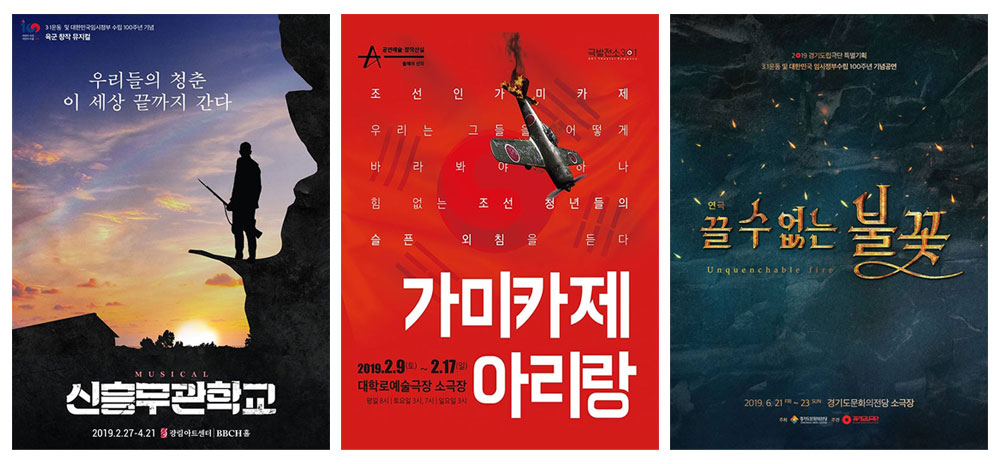
The year 2019 marks the 100th anniversary of the Korean Provisional Government and the March 1st Movement. As if they were celebrating this, performing arts producers presented works telling stories of Korean independence activists against the background of Korea under Japanese rule. These performances mostly took place around March 1 and April 11 (date of establishing the Korean Provisional Government).The musical New Military Academy (script by Hee-jun Lee, music by Jeong-ah Park and directed by Dong-yeon Kim), which describes the life of Lee Hoe-yeong, Korean independence activist, was presented from February 9, at BBCH Hall of Kwanglim Arts Center. On Mach 5, Seoul Performing Arts Company began to perform at the Seoul Arts Center Yun Dong-ju, Shooting the Moon (script by Ah-reum Han, music by Sang-jun Oh and directed by Ho-seong Kwon) which dramatizes poetry by Yun Dong-ju, Koreans’ most beloved poet. Another musical called Hero (script by Ah-reum Han, music by Sang-jun Oh and directed by Ho-ji Yun), which elaborates on Korean patriotic martyr An Jung-geun’s assassination of Ito Hirobumi, was staged from March 9 at the grand theater of Sejong Center for the Performing Arts. Other genres also continued to release works dealing with the Japanese colonial rule of Korea.
Meanwhile, the play Kamikaze Arirang (script by Eun-su Shin and directed by Beom-cheol Jeong) was presented as one of the new performances of this year selected by the Arts Council Korea’s “Performing Arts Creation Cradle” project. The play tells a story of Joseon’s kamikaze commando unit. Such a trend of telling historical stories is particularly visible in performances by Korea’s local theater companies; they tend to make performances out of their own local area’s historical events. For example, Gyeonggi Provincial Theatre Company performed Unquenchable Fire (script by Yang-gu Lee and directed by Tae-hwan Ku), a play based on the massacre in Jaem-ri in 1919. Other plays, dances and concerts describing Korea under Japanese rule were presented all over Korea. This trend is expected to continue until the end of the year.
When it comes to the number of performances, over 100 works would have been produced to commemorate the centennial of the Korean Provisional Government and the March 1st Movement. What is regrettable is the fact that except a few number of works, most of them were planned quite hurriedly after the announcement of supporting such historical performances as part of Korea’s centennial project, earlier this year. Consequently, many of the performances don’t seem to reach a certain level of quality. Moreover, most of the shows were staged in a sporadic and temporary manner and they ended up becoming just one-shot events. Therefore, these performances are unlikely to be presented sustainably.
No Separation between Men and Women
_Gender-Free Casting
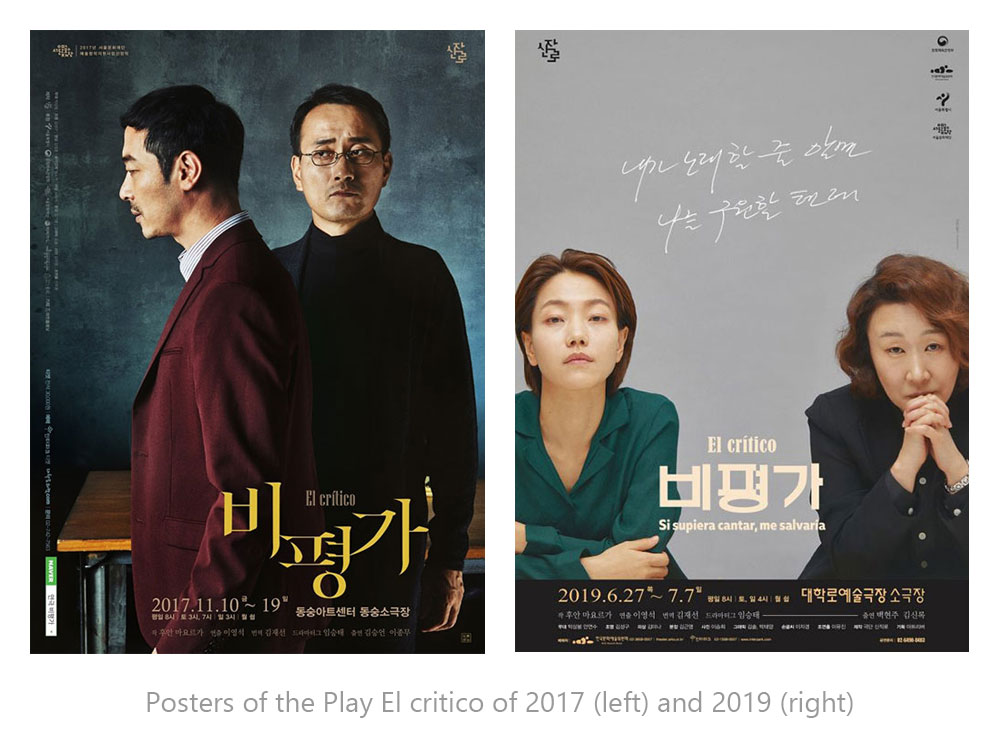
Gender-free casting refers to casting actors regardless of their gender by becoming free from gender-specific roles. In fact, there were quite a few performance changing roles between men and women but these past performances were confined to changing gender roles to arouse interest. On the other hand, gender-free casting is a more developed form of casting intended to break away from the existing stereotypes regarding gender, gender roles and gender identity. Such casting is also divided into ‘gender-free casting,’ which makes the division of genders meaningless, and ‘gender bending,’ which switches genders. To explain more generally, this article uses just one term: ‘gender-free.’
Examples of recent gender-free performances are the play El critico (script by Juan Mayorga and directed by Young-seok Lee) at the small hall of Daehakro Arts Theater and the play The Story of Mozi (script by Min-jun Seo and directed by Rae-eun Lee) co-produced by Namsan Arts Center and the theater company The Moon and Child Theatre. El critico is a play with two actors who play the roles of a playwright and critic. The 2017 premiere of the play had two actors but in 2019, it cast two actresses to change the public perception of gender roles. Meanwhile, The Story of Mozi, which had to be presented as a reciting performance due to the accident of one of its main actresses, cast an actress as the philosopher Mozi and an actor as a court lady. Another play called Route 7 (script by Hae-ryul Bae and directed by Ja-hye Ku), which served as the opening performance of Namsan Arts Center’s 2019 season, could also be defined as a gender-free performance.
A representative gender-free musical is Gwanghwamun Love Song (script by Sun-woong Ko, music by Young-hoon Lee and directed by Gina Lee). This musical drew great attention by casting the actor Sung-hwa Chung and actress JI-yeon Cha as its main role Wolha. While the previously mentioned plays change the roles of men and women, Gwanghwamun Love Song casts both a man and woman as the same role, refusing to confine a character to a specific gender. In this manner, the way of dealing with gender develops. The process of making any concept of gender meaningless is especially noticeable in the performing arts scene.
Girl Crush on Stage
_Musicals Based on the Story of Real Women
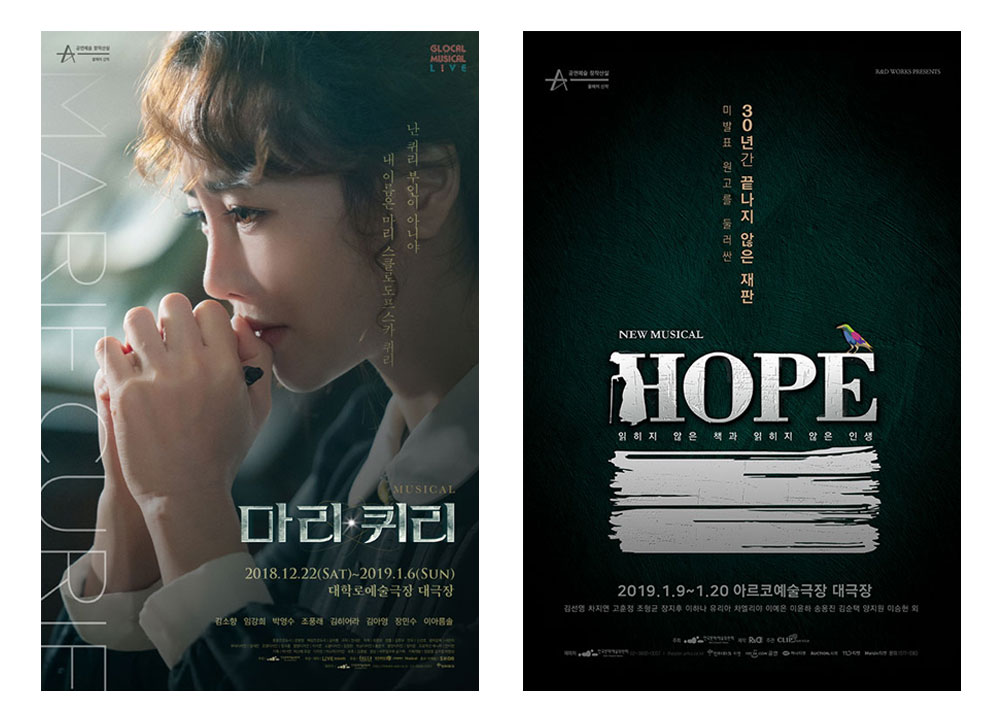
Another characteristic of this year’s musicals is the fact that a great number of performances have women as their main characters. This is not the trend that appeared for the first time this year. There have already been numerous musicals with female main characters: Chicago, Aida, Mamma Mia, Rebecca and Anna Karenina. What differentiates this year’s musicals with women is a ‘creative story of real people.’
Two representative examples of such musicals would be the following works: Marie Curie (script by Se-eun Cheon, music by Jong-yun Choi and directed by Hyun-woo Kim) and Hope: Unread Book and Unread Life (script by Nam Kang, music by Hyo-eun Kim and directed by Rufina Oh). Both performances, which tell stories of real people, were selected by the “Performing Arts Creation Cradle” project as new performances of this year. In particular, Hope has been recognized as a work opening a new chapter in feminine narrative by gathering together a female writer, composer and director.
The main character of Hope is Eva Hoffe who was at trial against the National Library of Israel over the ownership of an unpublished novel by Franz Kafka and who died at the age of 85. This courtroom drama elaborates on the process of finding out if the novel belongs to humanity or to an individual. In this context, the performance reveals the turbulent life of a woman for whom the papers constituted her reason of existence and identity. Such a theme and courtroom drama are elements that could make a performance too serious but Hope has been recognized as winning the empathy of female audiences in a delicate way.
Other musicals about real people are also planned to be staged: The Hymn of Death whose main character is Yun Shim-deok, one of Joseon’s first modern women, and Marie Antoinette which tells us about the life of a tragic queen who was guillotined. I hope that these performances ensure both quality and popularity so that more musicals about women can be produced.
A Play Seen with Ears and Heard with Eyes
_Barrier-Free Theater
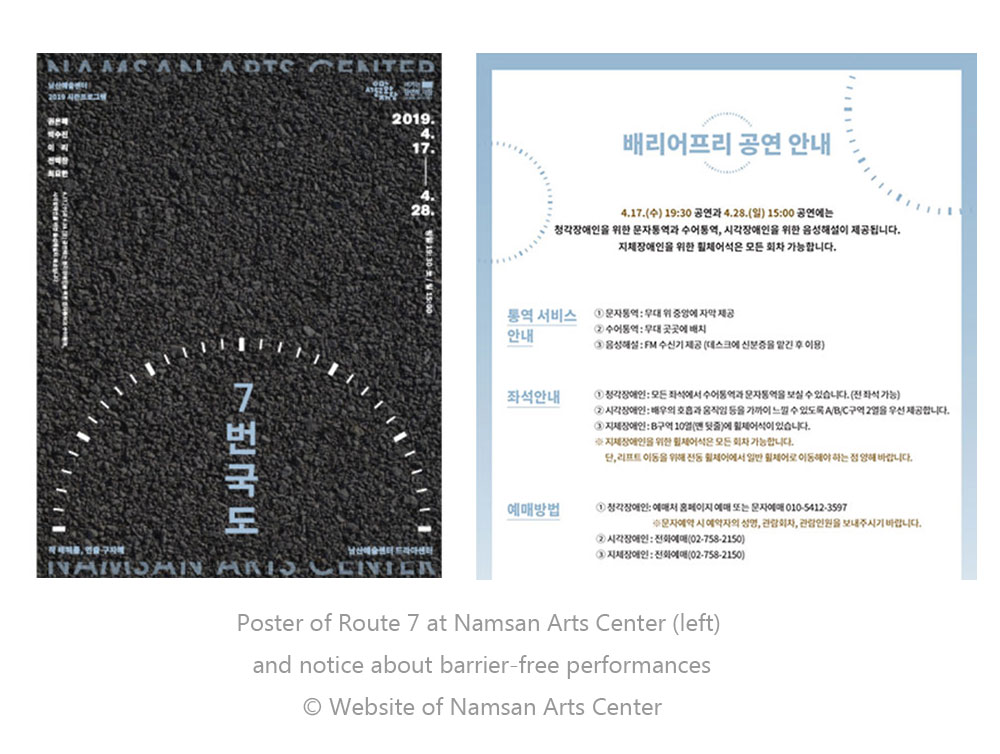
‘Barrier-free’ is an adjective used for a movement or a way that breaks down physical and institutional barriers in order to enable persons with visual or hearing impairment to engage in cultural activities just like persons without disabilities. Such a movement started in the film industry. For example, subtitles, sign language interpreting and voice support have improved the accessibility of persons with disabilities.
Barrier-free performances have been produced mostly by companies of persons with disabilities. Among the companies of those without disabilities, StudioMusical was the first to show interest in barrier-free productions. Making audio clips called Here is a Theater Where You Hear Something, the Company gave persons with disabilities opportunities to listen to musicals through a podcast platform. Thanks to the active response of persons with disabilities, the Company has developed the clips into a stage performance called Bodeul Performance.
Among theaters, Namsan Arts Center, which serves as a pioneer in the theater scene, presented three barrier-free performances this year. For this season, the Theater adopted a barrier-free system for persons with disabilities in some of the shows of the three performances: Route 7, On Pluto and The Story of Mozi. The Theater had verified the accessibility of persons with disabilities through its 2017 special program Uncomfortable Positions and since last year, it has run a barrier-free system for some of its performances. Meanwhile, Soul Theater, which participated in the Korea Theater Festival in Seoul this year, staged a barrier-free performance through Manchurian Front.
Although barrier-free performances are designed for persons with disabilities, those who saw them all say that they had a special experience. Sign language interpreters who express with their hands not only the script but also sound effects teach a new language to those without disabilities. Just as they learn a foreign language and culture to overcome stereotypes, they see sign language interpreting and have an occasion to do away with stereotypes linked to language and its meanings. I hope that more barrier-free performances are produced. However, before that, it would be necessary to improve the physical accessibility of persons with physical disabilities.
To conclude, the keywords of the aforementioned cases would be ‘independence activists,’ ‘women’ and ‘persons with disabilities.’ These keywords have something in common; they all shed new light on people to whom we haven’t paid sufficient attention. It is true that these cases don’t represent the performing arts scene in general. Nevertheless, as I already made it clear, such attempts and efforts constitute a meaningful phenomenon. Although it is just a small movement, it could serve as a basis for a later movement.
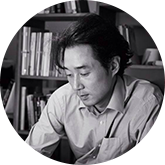
About the Writer
Il-song Kim / President of Ianjae
Il-song Kim served as the editor-in-chief of the monthly magazine specializing in performing arts and culture Scene Playbill and as that of Seoul Dance Center’s webzine Choom:in. He is currently the president of Ianjae and writing about performing arts for the monthly magazine The Neighbor. He also gives lectures on performing arts to the public and would-be planners.









 PREV
PREV
.jpg)
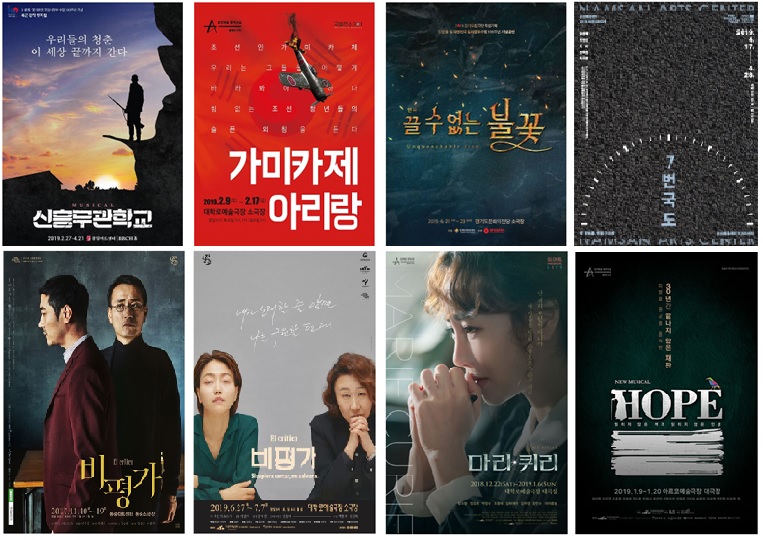
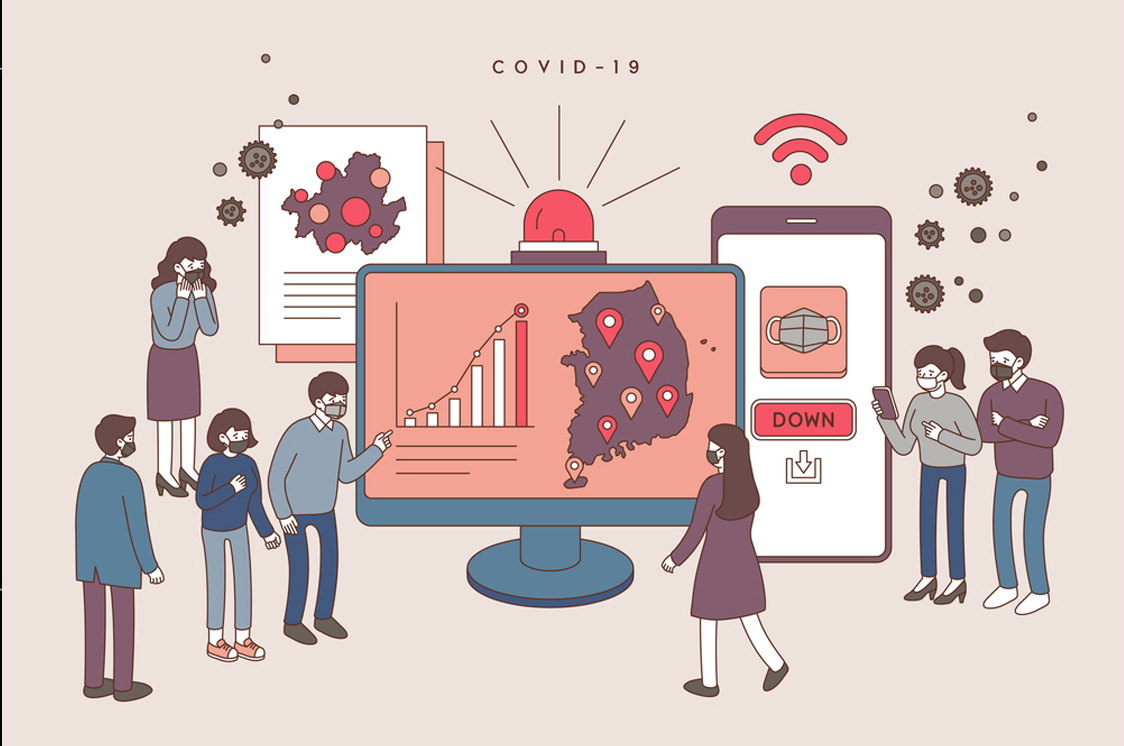

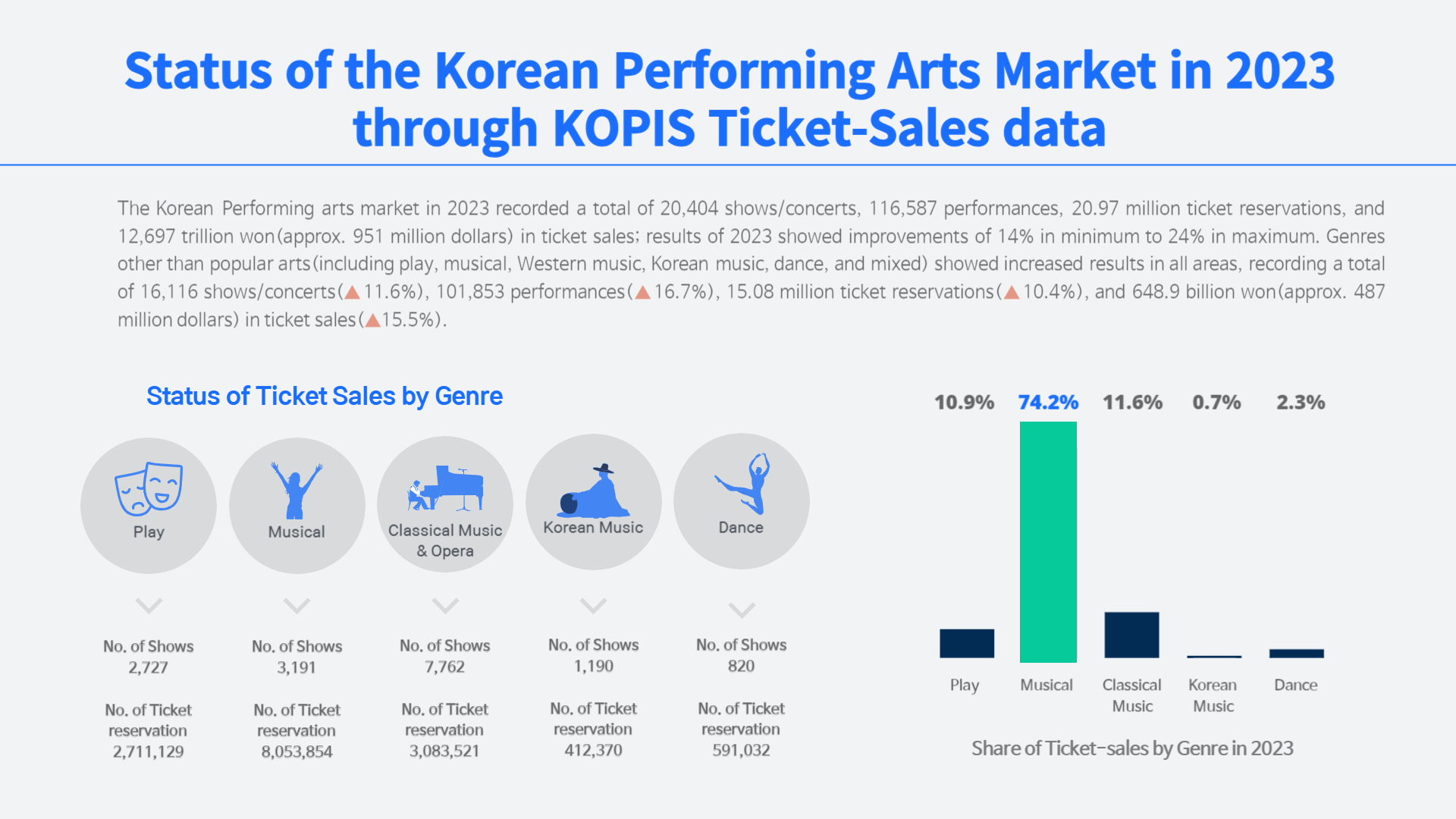
.jpg)
.jpg)
.jpg)
.jpg)











